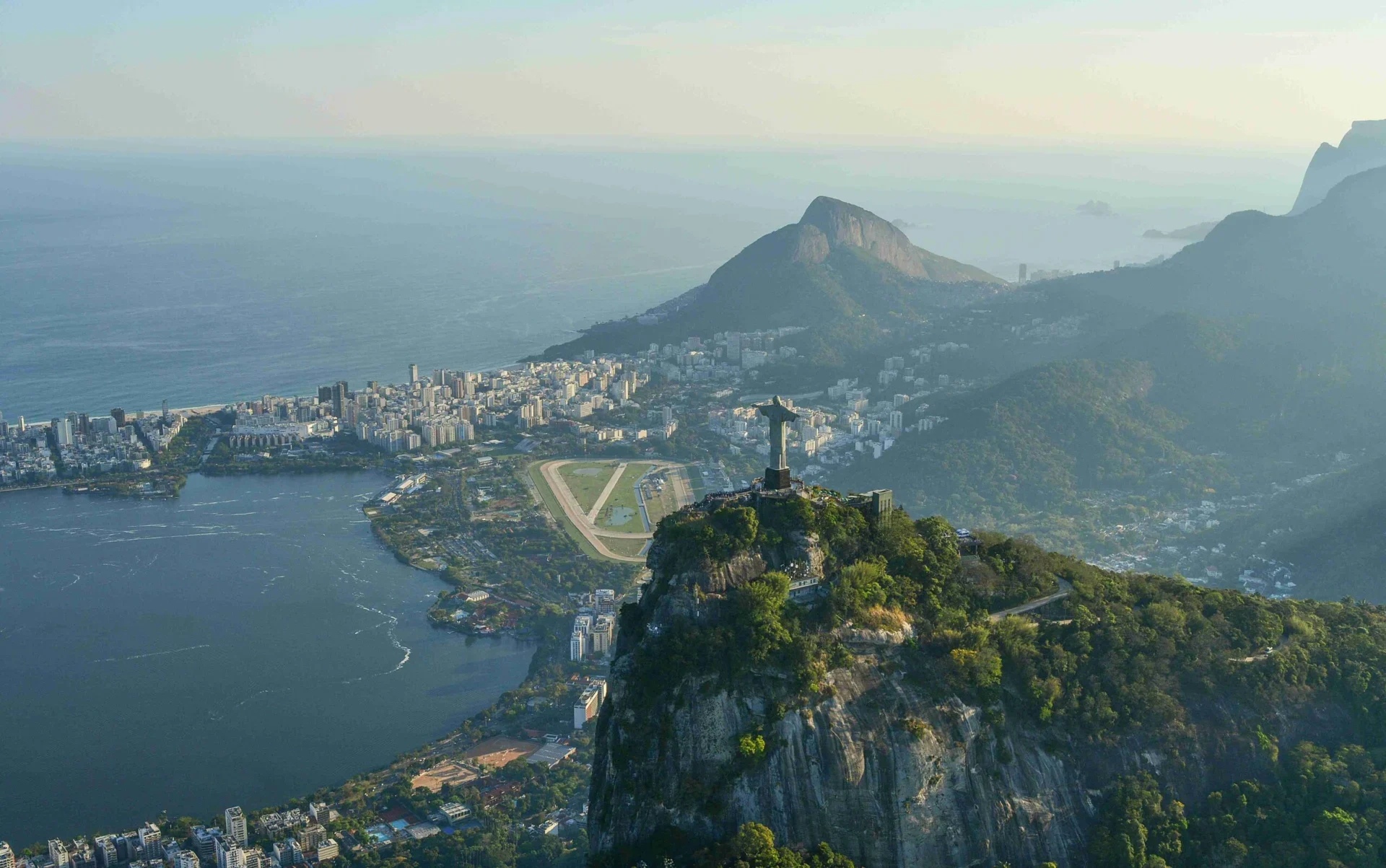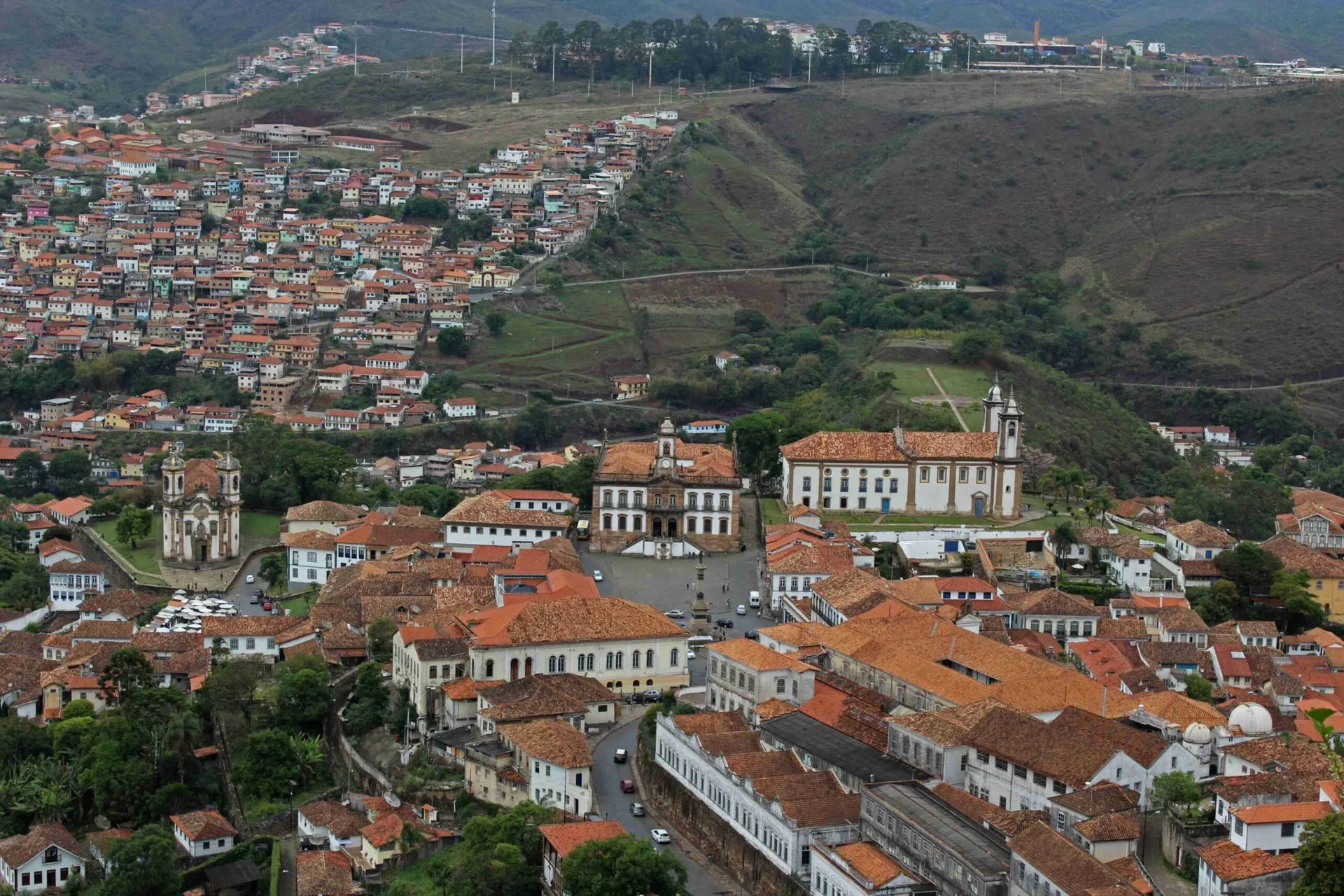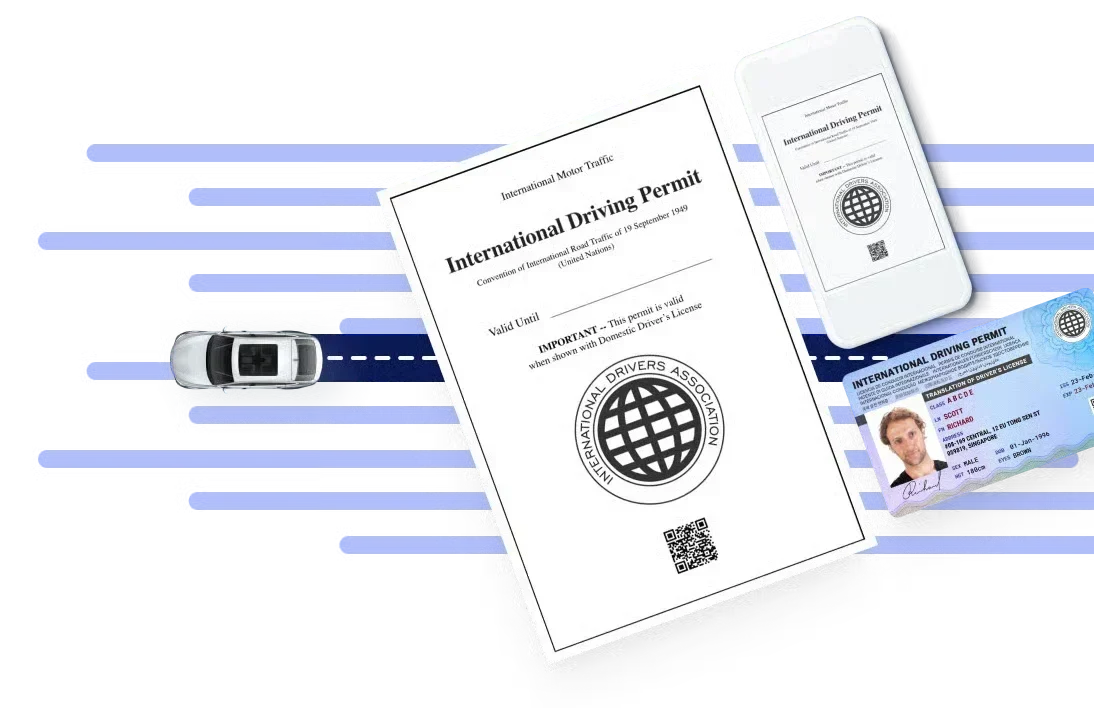Brazil, a country of vibrant cultures, stunning landscapes, and unforgettable experiences, offers some of the world’s most exciting road trip opportunities. From coastal drives with breathtaking ocean views to inland routes through historic towns and lush forests, there’s a perfect journey waiting for every traveler.
This article will guide you through five of Brazil’s best road trip routes, providing all the information needed to plan an unforgettable adventure.
The Green Coast (Costa Verde) – Rio de Janeiro to São Paulo
Imagine cruising along a winding coastal road, the Atlantic Ocean stretching endlessly to your left, while dense, emerald-green rainforest climbs the hills to your right. This is the essence of the Green Coast route, a stunning drive that connects two of Brazil’s most iconic cities.
Starting Point: Rio de Janeiro
End Point: São Paulo
Distance: Approximately 330 km (205 miles)
Recommended Duration: 3-5 days
The journey begins in the vibrant city of Rio de Janeiro. Before hitting the road, take some time to explore the city’s famous landmarks, such as Christ the Redeemer and Copacabana Beach. Once you’re ready to start your adventure, head southwest on BR-101.

Source: Photo by Raphael Nogueira on Unsplash
Your first stop should be the colonial town of Paraty. This charming UNESCO World Heritage site is known for its well-preserved Portuguese colonial architecture and cobblestone streets.
Spend a day wandering through the historic center, taking in the colorful buildings and artisan shops. Take the chance to take a boat tour of the bay, where you can explore secluded beaches and crystal-clear waters.
Continuing along the coast, you’ll reach Ubatuba, a surfer’s paradise with over 100 beaches. Whether you’re a seasoned surfer or a beginner, the waves here cater to all levels. For a unique experience, visit the Projeto Tamar , a sea turtle conservation project where you can learn about these fascinating creatures.
The journey’s final stretch takes you to São Paulo, Brazil’s largest city and economic powerhouse. The contrast between the peaceful coastal towns and the bustling metropolis is striking. Take time to explore the city’s world-class museums, diverse culinary scene, and vibrant nightlife.
Tips for the Green Coast Route
- The road can be winding and narrow in parts, so drive cautiously.
- Plan to visit during Brazil’s summer (December to March) for the best beach weather.
- Book accommodations in advance, especially during peak season.
The Romantic Route (Rota Romântica) – Rio Grande do Sul
Nestled in Brazil’s southernmost state, the Romantic Route offers a completely different side of the country. This charming journey takes you through a region heavily influenced by German immigration, resulting in a unique blend of Brazilian and European cultures.
Starting Point: São Francisco de Paula
End Point: Canela
Distance: 184 km (114 miles)
Recommended Duration: 2-3 days
The route begins in São Francisco de Paula, a small town known for its gaucho culture and delicious barbecue. From here, you’ll drive through a series of picturesque towns, each with its own charm and attractions.
One of the highlights is Gramado, often called the “Brazilian Switzerland.” The town’s alpine-style architecture, chocolate shops, and cooler climate make it feel worlds away from the tropical beaches Brazil is famous for. Take advantage of the Mini Mundo, a park featuring miniature replicas of famous buildings from around the world.
Next, visit Nova Petrópolis, home to the Aldeia do Imigrante (Immigrant’s Village), an open-air museum showcasing the region’s German heritage. Here, you can learn traditional dances, taste local delicacies, and even try your hand at artisanal crafts.
The journey ends in Canela, known for its stunning Caracol State Park. The park’s main attraction is the 131-meter Caracol Waterfall, which can be viewed from an observation tower offering panoramic views of the surrounding landscape.
Tips for the Romantic Route
- This region can get chilly, especially in winter (June to August). Pack warm clothes!
- Try the local cuisine , which includes German-inspired dishes like kassler (smoked pork chop) and apfelstrudel (apple strudel).
- Consider visiting during the region’s famous Christmas celebrations for a truly magical experience.
The Gold Trail (Estrada Real) – Minas Gerais to Rio de Janeiro
Step back in time and follow in the footsteps of 17th and 18th-century gold miners on the historic Gold Trail. This route connects the gold-rich state of Minas Gerais with the port city of Rio de Janeiro, passing through some of Brazil’s most well-preserved colonial towns.
Starting Point: Ouro Preto, Minas Gerais
End Point: Paraty, Rio de Janeiro
Distance: Approximately 710 km (441 miles)
Recommended Duration: 5-7 days
The journey begins in Ouro Preto , a UNESCO World Heritage site renowned for its baroque architecture and rich history. Spend a day exploring the town’s many churches, museums, and artisan workshops. Take the chance to descend into a former gold mine to glimpse the area’s mining past.
From Ouro Preto, head to Tiradentes, another beautifully preserved colonial town. Here, you can ride a traditional steam train, visit the impressive Igreja Matriz de Santo Antônio church, and indulge in some of Minas Gerais’ famous cuisine.
Continuing south, you’ll reach the mountain town of São João del Rei, known for its music festivals and the unique sound of its church bells. Take time to explore the São Francisco de Assis Church, considered one of Brazil’s finest examples of baroque architecture.
The final leg of the journey takes you through the Serra da Bocaina National Park , a vast protected area of the Atlantic Rainforest, before ending in the coastal town of Paraty (which you might remember from the Green Coast route).

Source: Photo by Luiz Felipe S. C. on Unsplash
Tips for the Gold Trail
- Many of the towns along this route have cobblestone streets, so comfortable walking shoes are a must.
- The route passes through mountainous terrain, so be prepared for some challenging driving.
- Try the local cachaça (sugarcane spirit) in Paraty, which is famous for its artisanal distilleries.
The Transpantaneira Highway – Mato Grosso
For nature lovers and wildlife enthusiasts, the Transpantaneira Highway offers an unparalleled opportunity to explore one of the world’s largest wetlands, the Pantanal. This unique ecosystem is home to an incredible diversity of animals, including jaguars, caimans, and hundreds of bird species.
Starting Point: Poconé
End Point: Porto Jofre
Distance: 147 km (91 miles)
Recommended Duration: 2-3 days
Don’t let the short distance fool you – this unpaved road through the heart of the Pantanal is an adventure in itself. The journey begins in Poconé, the gateway to the northern Pantanal. Before setting off, make sure your vehicle is suitable for the rugged terrain ahead.
As you drive along the raised dirt road, you’ll cross over 100 wooden bridges, each offering a chance to spot wildlife. Keep your eyes peeled for capybaras (the world’s largest rodent), giant anteaters, and a vast array of colorful birds.
About halfway along the route, you’ll reach the small settlement of Porto Cercado. This is a great place to stop for a few hours or overnight, as it offers access to several eco-lodges and opportunities for guided wildlife tours.
The Transpantaneira ends at Porto Jofre, on the banks of the Cuiabá River. This area is the best place in the world to spot wild jaguars. Consider taking a boat tour for the best chances of seeing these magnificent big cats.
Tips for the Transpantaneira Highway
- A 4×4 vehicle is highly recommended for this route.
- The best time to visit is during the dry season (May to September), when wildlife is concentrated around the remaining water sources.
- Bring plenty of insect repellent and sunscreen.
- Always follow your guide’s instructions and maintain a safe distance from wildlife.
BR-101 Coastal Highway – Northeast Brazil
For those seeking sun, sea, and sand, the BR-101 coastal highway along Brazil’s northeast offers an epic beach-hopping adventure. This route takes you through several states, each with its own unique culture and attractions.
Starting Point: Salvador, Bahia
End Point: Natal, Rio Grande do Norte
Distance: Approximately 1,200 km (745 miles)
Recommended Duration: 7-10 days
The journey begins in Salvador, the vibrant capital of Bahia state. Known for its colorful colonial architecture, Afro-Brazilian culture, and lively music scene, Salvador deserves at least a couple of days of exploration before hitting the road.
Heading north, your first major stop is Aracaju, the capital of Sergipe state. Here, you can relax on the beautiful Atalaia Beach or take a boat trip through the mangroves of the Vaza-Barris River.
Continuing along the coast, you’ll reach Maceió in Alagoas state. This city is famous for its stunning beaches and natural pools formed by coral reefs. Don’t miss the chance to take a jangada (traditional sailing raft) ride to the crystal-clear waters of the Piscinas Naturais.

Source: Photo by Jaime Dantas on Unsplash
The next significant stop is Recife, known as the “Venice of Brazil” due to its many waterways and bridges. Nearby, the historic town of Olinda offers a glimpse into colonial Brazil with its colorful houses and baroque churches.
As you continue north, you’ll pass through João Pessoa, home to Tambaba, one of Brazil’s few official naturist beaches. The final stretch takes you to Natal, known for its expansive sand dunes and the largest cashew tree in the world.
Tips for the BR-101 Coastal Highway
- This route can be busy, especially during summer and holidays. Plan your travel times accordingly.
- Be cautious when swimming, as some beaches have strong currents.
- Try the local seafood dishes in each region – the cuisine varies significantly from state to state.
Before you rent a car and hit the road, there are several things to know about driving in Brazil. This comprehensive guide will cover everything you need to know to ensure a safe and enjoyable driving experience in this South American gem.
Renting a Car in Brazil
Before you can embark on your Brazilian road trip adventure, you’ll need to rent a car. Here’s what you should know:
Driver’s License Requirements
You’ll need a valid driver’s license to rent a car in Brazil. While an International Driver’s License (IDL) is not always required, having one is recommended, especially if your license is not in Portuguese or English. Click here to get yours!
Choosing a Car Rental Company
Major international car rental companies operate in Brazil alongside local providers. To ensure quality service and support, it’s advisable to book with a reputable company.
Types of Cars Available
Most rental cars in Brazil have manual transmission (stick shift). If you prefer an automatic, request one in advance, as they’re less common and may cost more.
In Brazil, cars often run on either gasoline (gasolina) or ethanol. Some vehicles are “flex-fuel,” meaning they can use either. Make sure you know which type of fuel your rental car requires.
Rules When Driving in Brazil
Once you’ve secured your rental car, it’s time to hit the road. Here are some essential rules and customs to keep in mind:
- Right-Side Driving: In Brazil, people drive on the right side of the road, similar to most countries in the Americas and Europe.
- Speed Limits: Speed limits vary depending on the type of road and location. The typical speed limit in cities is 60 km/h (about 37 mph). It can range from 80 km/h to 120 km/h (50-75 mph) on highways. Always watch for posted speed limit signs, as they can change frequently.
- Seatbelts: Seatbelts are mandatory for all passengers, including those in the back seat.
- Cell Phone Use: It is illegal in Brazil to use a handheld cell phone while driving. If you need to call, use a hands-free device or pull over safely.
- Headlights: It’s required by law to keep your headlights on at all times when driving on federal highways, even during the day.
- Right Turns on Red: Unlike in some countries, turning right on a red light is only allowed in Brazil if a specific sign permits it.
Here are more things to consider when driving around Brazil :
Road Conditions
Road quality in Brazil can vary significantly. While major highways between big cities are generally well-maintained, rural and lesser-traveled routes may have potholes or even unpaved sections. Be prepared for diverse driving conditions, especially if your itinerary takes you off the beaten path.
Traffic in Cities
Major cities like São Paulo and Rio de Janeiro are known for heavy traffic, especially during rush hours. Traffic jams (engarrafamentos) can be intense, so plan your trips accordingly and allow extra time when driving in urban areas.
Motorcycles
Be extra cautious of motorcycles, which are prevalent in Brazilian cities. They often weave between lanes of cars, so always check your mirrors and blind spots before changing lanes.
Toll Roads
Many major highways in Brazil are toll roads. Some accept cash, while others require an electronic pass. Check with your car rental company about toll payment options.
Gas Stations
Gas stations (postos de gasolina) are generally plentiful in urban areas and along major highways. However, they can be scarce in rural regions, so it’s wise to keep your tank at least half full when venturing into less populated areas.
The Roads of Brazil Await!
Driving in Brazil can be an incredible way to explore this diverse and beautiful country. While it requires some preparation and adjustment, the rewards of hitting the open road in Brazil are well worth it. From the vibrant streets of São Paulo to the pristine beaches of Bahia, a road trip through Brazil offers unforgettable experiences and the chance to see the country from a unique perspective.
Remember to stay alert, follow local traffic laws, and, most importantly, enjoy the journey. Brazil’s rich culture, stunning landscapes, and warm hospitality await you at every turn. So buckle up, turn on some bossa nova, and get ready for the drive of a lifetime in beautiful Brazil!
Certainly! Here’s an FAQ section that provides additional value to readers by addressing questions not directly covered in the main article:
Frequently Asked Questions (FAQs)
Are there toll roads in Brazil, and how do I pay for them?
Yes, there are toll roads in Brazil, especially on major highways. Most toll booths accept cash payments in Brazilian Reals. Some modern toll systems use electronic tags, which you can arrange with your rental car company.
Is it safe to drive at night in Brazil?
While driving during the day is generally safe, night driving in Brazil can be more challenging and potentially dangerous, especially in rural areas. Poor road conditions, inadequate lighting, and the presence of animals on the road make it advisable to plan your trips during daylight hours when possible.
Are there any specific driving laws in Brazil I should be aware of?
Yes, some key laws include:
- It’s illegal to use a mobile phone while driving.
- All passengers must wear seatbelts.
- Children under 7.5 years old must use appropriate car seats.
- The legal blood alcohol limit for drivers is zero.
What should I do if my car breaks down during the trip?
If your car breaks down, pull over to a safe spot if possible. Major highways have emergency phones every few kilometers. For rental cars, contact the rental company’s emergency number. It’s also a good idea to have the number of a national roadside assistance service like Auto Socorro 24 Horas.
Do I need any special vaccinations for these road trips?
Certain vaccinations may be recommended depending on your route and the time of year. Consider vaccinations for yellow fever and typhoid for trips to the Pantanal or other rural areas. Always consult with a travel health professional before your trip.
Can I use my credit card everywhere in Brazil?
While credit cards are widely accepted in cities and tourist areas, smaller towns and rural locations may be cash-only. Carrying some cash is advisable, especially when traveling to more remote areas.
What’s the best time of year for these road trips?
The best time depends on the specific route:
- For coastal routes, September to March offers the best beach weather.
- For the Pantanal, the dry season (May to September) is ideal for wildlife viewing.
- The Romantic Route in the south can be enjoyed year-round but gets chilly in winter (June-August).
Are there any apps you recommend for road-tripping in Brazil?
Some useful apps include:
- Waze or Google Maps for navigation
- GasBuddy to find the cheapest fuel prices
- WhatsApp for communication (widely used in Brazil)
- XE Currency for quick currency conversion
- Duolingo or Google Translate for language assistance






